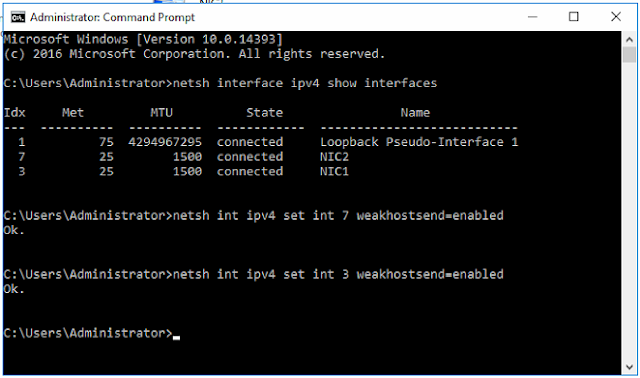Multihomed Windows Server
Multihomed Windows Server 2012R2 splitting network traffic on both interfaces - https://serverfault.com/questions/1016239/multihomed-windows-server-2012r2-splitting-network-traffic-on-both-interfaces
Chatgpt : https://chat.openai.com/share/ecb917f3-0132-43c5-9866-56a802a42d12
Configure ECMP
what happen when i bridged 2 different network port that connect to 2 different switch huawei and cisco in the server network configuration ?
Bridging two different network ports that connect to two different switches, one Huawei and one Cisco, in a server network configuration can be done, but it's essential to understand the potential implications and challenges involved. Here's what happens when you bridge these ports:
1. Layer 2 Bridging: When you bridge the two network ports, you are essentially creating a single broadcast domain. This means that devices connected to both switches will be in the same Layer 2 network, and they can communicate with each other as if they were on the same switch.
2. Spanning Tree Protocol (STP): If you're not careful, you may create a loop in your network, especially if both switches are connected to each other. This can lead to network instability and broadcast storms. To prevent this, you should configure Spanning Tree Protocol (STP) appropriately on both switches to detect and block loops.
3. VLAN Configuration: If you have VLANs configured on either switch, you'll need to ensure that the bridging does not interfere with your VLAN setup. Devices on the bridged ports will become part of the same VLAN, which may or may not be what you desire. You may need to reconfigure VLANs or use VLAN tagging to keep the separation.
4. Speed and Duplex Settings: It's important to ensure that the speed and duplex settings on both ends of the bridge match the capabilities of the hardware. Mismatched settings can lead to network performance issues.
5. Network Policies and Security: Bridging ports between two different network switches can bypass network policies and security mechanisms that were set up on each switch. Ensure that the security policies, firewall rules, and access controls are still in place and apply to the bridged network.
6. Interoperability: Huawei and Cisco switches may have different features and capabilities. Ensure that both switches can work together effectively in this configuration. You might need to adjust settings like port mode, port speed, and port negotiation.
7. Monitoring and Management: Network management tools and protocols may need to be adjusted to account for the bridged network. Monitoring and troubleshooting may also be more complex.
8. Redundancy and High Availability: Consider the impact on network redundancy and high availability. The bridge could be a single point of failure unless you implement a redundant setup.
9. Documentation and Change Management: Properly document the changes you make to your network configuration, and make sure your organization's change management processes are followed. This is crucial for maintaining and troubleshooting the network in the future.
In summary, bridging network ports between Huawei and Cisco switches can be done, but it should be approached with careful planning and consideration of the factors mentioned above. It's important to ensure that the resulting network behaves as expected and doesn't introduce security or stability issues. Depending on your specific network needs, you may want to explore alternative solutions, such as routing or VLAN configuration, to achieve your goals without the complexities of bridging.



Ulasan